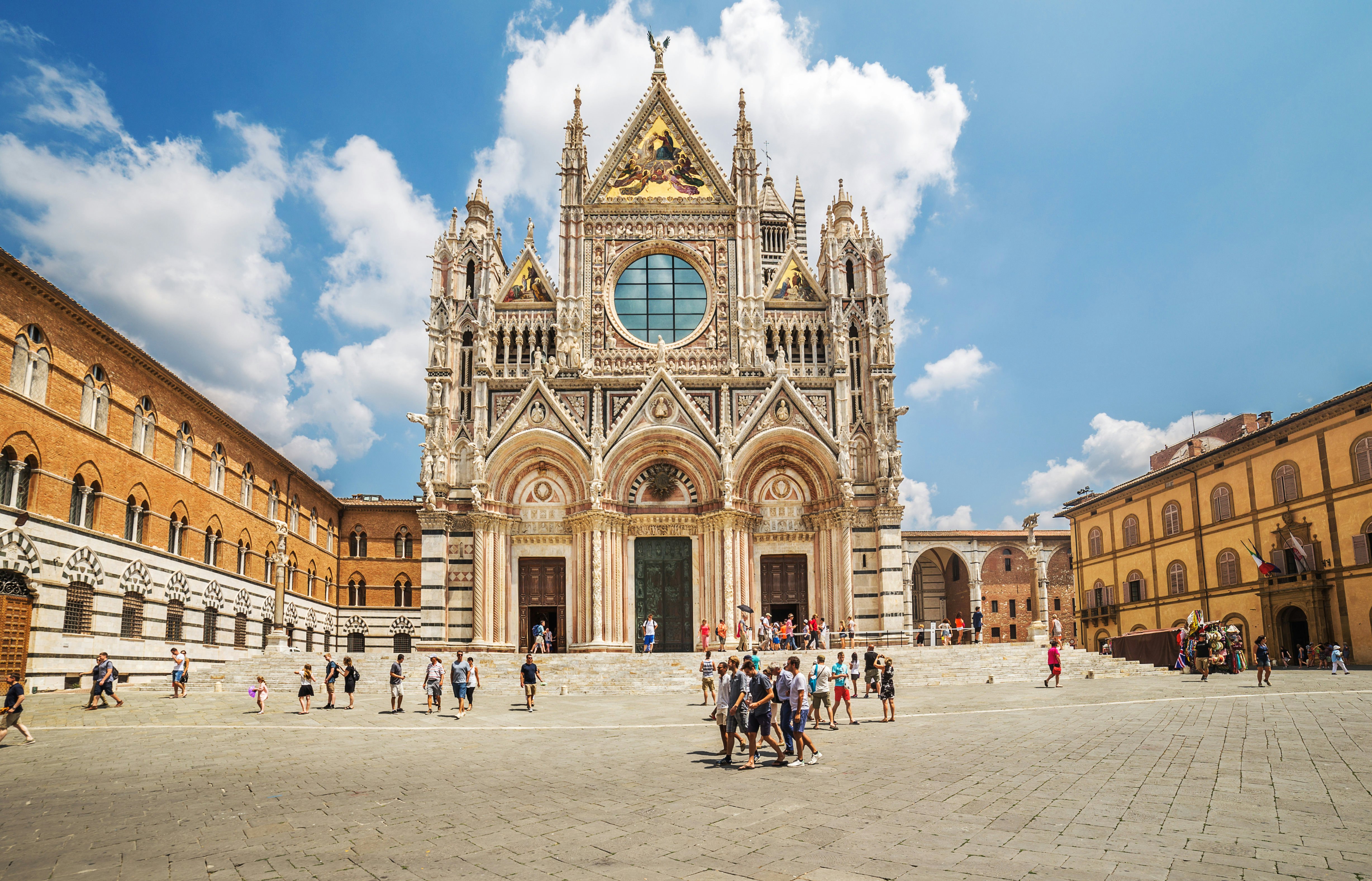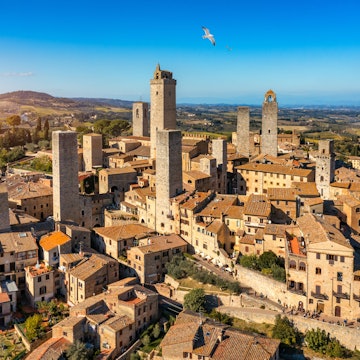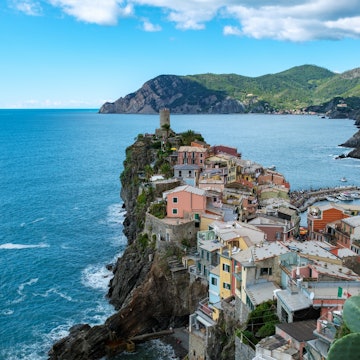

Explore Tuscany beyond Florence and Pisa with these top tips from a local writer. Franz-Marc Frei/Getty Images
Ever since author Frances Mayes renovated her ramshackle villa in the book Under the Tuscan Sun and actor Diane Lane memorably reinterpreted that adventure on the big screen in the 2003 movie, Tuscany — and its round-the-clock marketing machine — has doubled down on its reputation for rustic elegance, romance and, more recently, Instagrammability.
But this central Italian region offers much more than countryside charms and dreamlike landscapes (though, yes, there are plenty of those, too). In the spirit of the Italian Renaissance, which took root here in the 14th century, Tuscany is a cosmopolitan region packed with university towns and forward-thinkers in both the creative and scientific spheres. It attracts curious minds from all over the world who value its humanistic heart. If you’re one of those visitors, here are the practicalities to know before you go.

1. If you’re in Florence, you’re also in Tuscany
Blame it on the branding, but many first-time visitors to Florence think of Tuscany as a cypress tree-lined never-neverland far from the rest of civilization. But Tuscany is just one of Italy’s 20 regions, comparable to a state, and Florence is its capital (with a historic center surprisingly short on trees of any kind).
If you venture to the countryside, you will find those famously postcard-ready views, hay bales and vineyard vines, but there are also stereotype-bucking areas like the wild Maremma, the islands of the Tuscan archipelago and the Swiss-inflected Lunigiana. Avoid the rookie mistake of telling tour guides or folks you meet in Florence that your plans include “going to Tuscany” — you’re already there.
2. Tuscany is a year-round destination, depending on what you want to do
While it’s easy to enjoy Tuscany no matter the season, if you’re a food and wine fiend, September and October are excellent times to visit due to the grape harvest (vendemmia) and many connected celebrations. October begins the transition to focusing on the olive harvest, which typically concludes in early December.
If you’re a culture vulture planning to spend most of your time touring museums, monuments and other attractions, consider winter (January and February in particular), when the holiday crowds will have dispersed and you’ll have more breathing room in both big-ticket and under-the-radar attractions.
Crowds and heat are par for the course in summer, and come August, most Tuscans take time off work for the Ferragosto period (August 15 and the weeks flanking it), so many businesses close or operate on reduced timetables.
3. Tuscany’s two main airports are in Pisa and Florence
Both airports are small, primarily serving domestic and European destinations, but the Pisa airport, also known as Galileo Galilei Airport, is larger and well-connected to the city center and train station via the People Mover shuttle. Florence’s Amerigo Vespucci airport is linked to the Santa Maria Novella train station and the center of town by tram or taxi service.
If you’re making a transatlantic trip, you’ll connect to Florence or Pisa via another European hub. If your Italian trip extends beyond Tuscany, consider flying into Rome, Milan or Venice and arriving in Tuscany by train.

4. You don't need a car in towns and cities
Most historic centers in Tuscany are restricted traffic zones, written as ZTL (zona traffico limitato) in Italian and off-limits during certain hours to non-residents. Renting a car is a fantastic way to explore the countryside and reach remote areas of Tuscany — non-EU citizens should obtain an international driving permit before departure — but mostly a nuisance in the cities.
Though local ZTL specifics vary, it’s best to simply plan to get around by foot in the cities if you’re physically fit. Note that the steep streets of towns like Siena and cramped sidewalks in places like Florence mean that visitors with mobility issues will likely need to work with specialized travel providers to ensure their needs are met.
5. Pack simple, classic clothes in neutral colors to blend in
Despite stereotypes, not everyone in Tuscany is an Armani-clad supermodel — but standards of dress and personal grooming indeed diverge from what some travelers might be accustomed to back home. Wet hair in public is a cultural faux pas, and workout clothes aren’t worn outside of the gym or designated physical activities.
While attitudes around this are loosening a bit in younger generations, Tuscan culture remains highly appearance-conscious and residents tend to skew conservative — classic cuts, neutral colors — in their modes of dress.
6. The typical Tuscan sense of humor can catch visitors off guard
Dante Alighieri famously wrote his Divine Comedy in the Tuscan vernacular of the 14th century, laying the groundwork for standardized Italian and cementing Tuscany as the birthplace of the Italian language as we know it. This heritage means wordplay and witticisms are very much in the Tuscan DNA; culturally, the abiding sense of humor is sarcastic and irreverent, with plentiful cursing, “creative” forms of blasphemy and an impatience for political correctness that may not always land well with English speakers.

7. Regional rivalries run deep here
Some of the most famous beefs are between Florence and Pisa (fueled by contemporary soccer teams), Pisa and Livorno and Florence and Siena, each dating back centuries and rooted in early struggles for economic power. Today these rivalries are mostly all in good fun; a quick way for outsiders to cement bonds with locals in one place is by gently suggesting you don’t like another. If this is done with humor rather than a sense of entitlement, you’re sure to get some enthusiastic reactions (and possibly some new friends).
8. Lunch and dinner follow set schedules
Authentic Tuscan trattorias and mid-tier restaurants have fairly standardized service hours, opening around 12:30pm for lunch and shutting down seating between 2 and 2:30pm. The “early bird” dinner hour is 7:30pm, and the last trail of arrivals is typically between 9:30 and 10pm — perhaps a little later on weekends and in cities.
Any sit-down restaurants that present themselves as traditional but are serving at hours far outside those (say, 11am for lunch or 5pm for dinner) are focused on tourists and likely not serving quality food. In cities, you can find the occasional new-generation spots offering all-day dining options (usually indicated by an orario continuato sign), but they won’t be cosplaying as traditional trattorias — and that’s what you want to avoid.
9. Some travelers may feel marginalized by Italy’s current social and political climate
Tuscany has historically been socially progressive; it was a stronghold of resistance to Benito Mussolini’s fascist regime and has long been a cornerstone of Italy’s left-leaning “Red Belt.” Just 20 years ago, it became the first Italian region to ban discrimination against the LGBTIQ+ community in the areas of employment, public services, lodging and education.
Still, the current Italian government has taken hardline conservative stances on social issues, with rollbacks of LGBTIQ+ freedoms and clampdowns on irregular migration that have stoked antagonism toward already marginalized groups, even in relatively more forward-thinking areas like Tuscany. Additionally, even prior to the current government’s whitewashed view of “Italianness,” many Black travelers in Tuscany, particularly Black women, reported experiences with microaggressions and occasional outright racism on the ground. While travelers of all demographics can feel at home in Tuscany, unfortunately, advocating for oneself may be necessary at times.
















